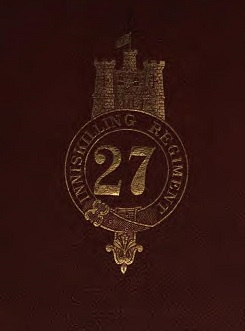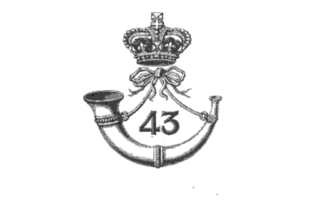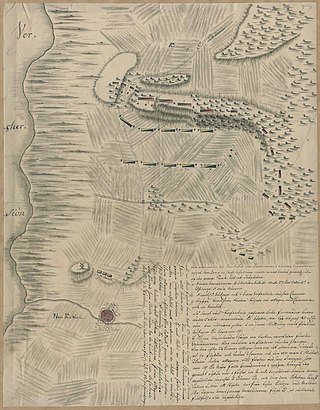| |||||
| Centuries: | |||||
|---|---|---|---|---|---|
| Decades: | |||||
| See also: | List of years in India Timeline of Indian history | ||||
Events in the year 1762 in India.
| |||||
| Centuries: | |||||
|---|---|---|---|---|---|
| Decades: | |||||
| See also: | List of years in India Timeline of Indian history | ||||
Events in the year 1762 in India.
1762 (MDCCLXII) was a common year starting on Friday of the Gregorian calendar and a common year starting on Tuesday of the Julian calendar, the 1762nd year of the Common Era (CE) and Anno Domini (AD) designations, the 762nd year of the 2nd millennium, the 62nd year of the 18th century, and the 3rd year of the 1760s decade. As of the start of 1762, the Gregorian calendar was 11 days ahead of the Julian calendar, which remained in localized use until 1923.

Dominic Serres (1722–1793), also known as Dominic Serres the Elder, was a French-born painter strongly associated with the English school of painting, and with paintings with a naval or marine theme. Such were his connections with the English art world, that he became one of the founding members of the Royal Academy in 1768, and was later briefly its librarian.
The 77th Regiment of Foot (Montgomerie's Highlanders) was a Highland Scots Regiment raised in 1757. The 77th Regiment was one of the first three Highland Regiments to fight in North America. During the Seven Years' War, the regiment lost 110 soldiers and 259 were wounded.
The 38th Regiment of Foot was an infantry regiment of the British Army, raised in 1705. Under the Childers Reforms it amalgamated with the 80th Regiment of Foot to form the South Staffordshire Regiment in 1881.

The Battle of Signal Hill was fought on September 15, 1762, and was the last battle of the North American theatre of the Seven Years' War. A British force under Lieutenant Colonel William Amherst recaptured St. John's, which the French had seized earlier that year in a surprise attack.

The 27th (Inniskilling) Regiment of Foot was an Irish infantry regiment of the British Army, formed in 1689. Under the Childers Reforms it amalgamated with the 108th Regiment of Foot to form the Royal Inniskilling Fusiliers in 1881.

The 46th Regiment of Foot was an infantry regiment of the British Army, raised in 1741. Under the Childers Reforms it amalgamated with the 32nd (Cornwall) Regiment of Foot to form the Duke of Cornwall's Light Infantry in 1881, becoming the 2nd Battalion of the new regiment.
The 88th Regiment of Foot (Highland Volunteers), or Campbell's Highlanders, was a Scottish infantry regiment in the British Army, formed in 1760 and disbanded in 1763.
The 87th Regiment of Foot (Keith's Highlanders) was a Scottish infantry regiment in the British Army, formed in 1759 and disbanded in 1763.
The 48th (Northamptonshire) Regiment of Foot was a regiment of the British Army, raised in 1741. Under the Childers Reforms it amalgamated with the 58th (Rutlandshire) Regiment of Foot to form the Northamptonshire Regiment in 1881.
The Treaty of Fontainebleau, signed on November 3, 1762, was a secret agreement of 1762 in which the Kingdom of France ceded Louisiana to Spain. The treaty followed the last battle in the French and Indian War in North America, the Battle of Signal Hill in September 1762, which confirmed British control of Canada. In Europe, the associated Seven Years' War continued to rage. Having lost Canada, King Louis XV of France proposed to King Charles III of Spain that France should give Spain "the country known as Louisiana, as well as New Orleans and the island in which the city is situated." Charles ratified the treaty on November 13 and Louis ratified it on November 23, 1762.

The 43rd (Monmouthshire) Regiment of Foot was an infantry regiment of the British Army, raised in 1741. Under the Childers Reforms it amalgamated with the 52nd (Oxfordshire) Regiment of Foot to form the 1st and 2nd battalions of the Oxfordshire Light Infantry in 1881. The regiment went on to become the Oxfordshire and Buckinghamshire Light Infantry in 1908.

HMS Stirling Castle was a 70-gun third rate ship of the line of the Royal Navy, built at Chatham Dockyard to the 1733 proposals of the 1719 Establishment, and launched on 24 April 1742.

The Seven Years' War (1756–1763) was a global conflict involving most of the European great powers, fought primarily in Europe and the Americas. One of the opposing alliances was led by Great Britain and Prussia. The other alliance was led by France, backed by Spain, Saxony, Sweden, and Russia. Related conflicts include the 1754 to 1763 French and Indian War, and 1762 to 1763 Anglo-Spanish War.

The British occupation of Manila was an episode in the colonial history of the Philippines when the Kingdom of Great Britain occupied the Spanish colonial capital of Manila and the nearby port of Cavite for eighteen months, from the 6th October 1762 to the first week of April 1764. The occupation was an extension of the larger Seven Years' War between Britain and France, which Spain had recently entered on the side of the French.

The Battle of Neukalen was a battle at Neukalen of the Seven Years' War between Swedish and Prussian forces fought on 2 January 1762. The Swedish force under the command of Carl Constantin De Carnall managed to rout the Prussian forces under Wilhelm Sebastian von Belling positioned on a hill next to the town of Malchin. This was the last battle of the Swedish and Prussian troops during the war. The Swedes had a total of 4,000 men, in eight 8 battalions and several hundred cavalry. However, only the first line of 2,000 infantry and 200 cavalry took part in the fighting. The Prussian force consisted of more than 2,000 men, in 5 battalions, 2 companies and a hussar regiment. The Swedes had 37 killed and 137 wounded, while the Prussians had 50 killed, 120 wounded, and 180 captured.
The Battle of Alegaon was fought between Nizam Ali Khan of Hyderabad and Raghunathrao of the Maratha Confederacy against Madhavrao I of the Maratha Confederacy. Raghunathrao had established an alliance with Nizam Ali Khan of Hyderabad. When conflict arose between Raghunathrao and Madhavrao I, a joint campaign by Nizam Ali Khan and Raghunathrao resulted in Madhavrao I being heavily defeated. Madhavrao I surrendered on 12 November 1762. Nizam Ali Khan got all of his territories lost at the Battle of Udgir. Madhavrao I submitted to his uncle, Raghunathrao.
Events from the year 1813 in Russia
The 90th Regiment of Foot was a short-lived infantry regiment in the British Army which was raised in Ireland as a light infantry corps in 1759, during the Seven Years' War with France.